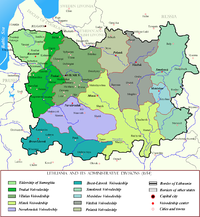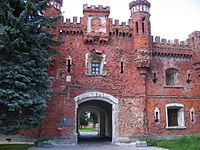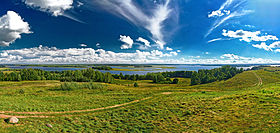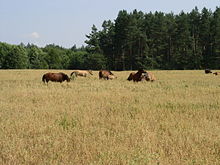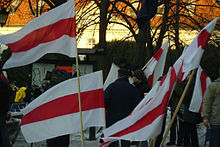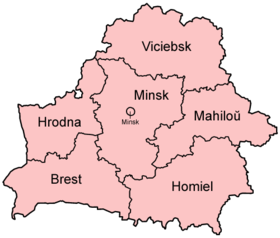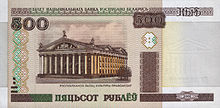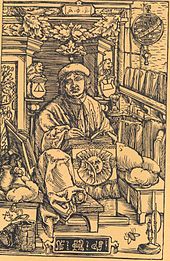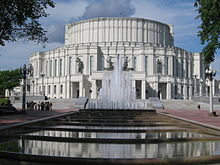
Belarus
Background Information
SOS Children, which runs nearly 200 sos schools in the developing world, organised this selection. All children available for child sponsorship from SOS Children are looked after in a family home by the charity. Read more...
Republic of Belarus
|
||||||
|---|---|---|---|---|---|---|
|
||||||
Anthem:
|
||||||
|
Location of Belarus (green)
in Europe (dark grey) — [ Legend] |
||||||
| Capital and largest city |
Minsk 53°55′N 27°33′E |
|||||
| Official languagesa |
|
|||||
| Demonym | Belarussian | |||||
| Government | Unitary presidential republic | |||||
| - | President | Alexander Lukashenko | ||||
| - | Prime Minister | Mikhail Myasnikovich | ||||
| Legislature | National Assembly | |||||
| - | Upper house | Council of the Republic | ||||
| - | Lower house | House of Representatives | ||||
| Independence from the Soviet Union | ||||||
| - | Declared | 27 July 1990 | ||||
| - | Established | 25 August 1991 | ||||
| - | Completed | 25 December 1991 | ||||
| Area | ||||||
| - | Total | 207,595 km2 ( 85th) 80,155 sq mi |
||||
| - | Water (%) | negligible (2.830 km2, 1.093 sq mi)b | ||||
| Population | ||||||
| - | 2012 census | 9,457,500 ( 87th) | ||||
| - | Density | 45.8/km2 ( 142nd) 120.8/sq mi |
||||
| GDP ( PPP) | 2011 estimate | |||||
| - | Total | $141.771 billionc | ||||
| - | Per capita | $15,028c | ||||
| GDP (nominal) | 2011 estimate | |||||
| - | Total | $55.483 billionc | ||||
| - | Per capita | $5,881c | ||||
| Gini (2009) | 27.9 low |
|||||
| HDI (2013) | very high · 50th |
|||||
| Currency | Belarussian ruble ( BYR) |
|||||
| Time zone | FET ( UTC+3) | |||||
| Drives on the | right | |||||
| Calling code | 375 | |||||
| ISO 3166 code | BY | |||||
| Internet TLD | .by | |||||
| a. | ^ Constitution of the Republic of Belarus Section 1, Article 17 | |||||
| b. | ^ "FAO's Information System on Water and Agriculture". FAO. Archived from the original on 26 January 2012. http://web.archive.org/web/20120126112459/http://www.fao.org/nr/water/aquastat/countries/belarus/index.stm. Retrieved 16 February 2013. | |||||
| c. | ^ "Belarus". International Monetary Fund. http://www.imf.org/external/pubs/ft/weo/2012/01/weodata/weorept.aspx?sy=2009&ey=2012&scsm=1&ssd=1&sort=country&ds=.&br=1&c=913&s=NGDPD%2CNGDPDPC%2CPPPGDP%2CPPPPC%2CLP&grp=0&a=&pr.x=103&pr.y=5. Retrieved 17 April 2012. | |||||
Belarus ( / b ɛ l ə ˈ r uː s / bel-ə-ROOSS, White Russia ; Belarusian: Белару́сь, Bielaruś (Belarusian pronunciation: [bʲɛlaˈrusʲ]); Russian: Белоруссия, Belorussia), officially the Republic of Belarus, is a landlocked country in Eastern Europe bordered by Russia to the northeast, Ukraine to the south, Poland to the west, and Lithuania and Latvia to the northwest. Its capital is Minsk; other major cities include Brest, Hrodna (Grodno), Homiel (Gomel), Mahilyow (Mogilev) and Vitsebsk (Vitebsk). Over forty percent of its 207,600 square kilometres (80,200 sq mi) is forested, and its strongest economic sectors are service industries and manufacturing.
Until the 20th century, the lands of modern-day Belarus belonged to several countries, including the Principality of Polotsk, the Grand Duchy of Lithuania, the Polish–Lithuanian Commonwealth, and the Russian Empire. In the aftermath of the Russian Revolution, Belarus became a founding constituent republic of the Soviet Union and was renamed as the Byelorussian Soviet Socialist Republic (BSSR). Much of the borders of Belarus took their modern shape in 1939 when some lands of the Second Polish Republic were incorporated into it after the Soviet invasion of Poland and were finalized after World War II. The nation and its territory were devastated in World War II, during which Belarus lost about a third of its population and more than half of its economic resources. The republic was redeveloped in the post-war years. In 1945, the Belorussian SSR became a founding member of the United Nations, along with the Soviet Union and the Ukrainian SSR.
The parliament of the republic declared the sovereignty of Belarus on 27 July 1990, and during the dissolution of the Soviet Union, Belarus declared independence on 25 August 1991. Alexander Lukashenko has been the country's president since 1994. Despite objections from Western governments, Lukashenko has continued Soviet-era policies, such as state ownership of the economy. According to some organizations and countries, elections have been unfair, and political opponents have been violently suppressed. In 2000, Belarus and Russia signed a treaty for greater cooperation, with some hints of forming a Union State. Despite its proximity to the rest of Europe and the West, Belarus' Democracy Index rating continuously ranks the lowest in Europe, and the country is labeled as "Not Free" by Freedom House and "Repressed" in the Index of Economic Freedom.
Over 70% of Belarus's population of 9.49 million resides in urban areas. More than 80% of the population is ethnic Belarussian, with sizable minorities of Russians, Poles and Ukrainians. Since a referendum in 1995, the country has had two official languages: Belarussian and Russian. The Constitution of Belarus does not declare an official religion, although the primary religion in the country is Eastern Orthodox Christianity. The second most popular, Roman Catholicism, has a much smaller following, although both Orthodox and Catholic versions of Christmas and Easter are celebrated as national holidays.
Etymology
The name Belarus corresponds literally with the term White Russia. There are several claims to the origin of the name White Russia'. An ethno-religious theory suggests that the name used to describe the part of old Ruthenian lands within the Grand Duchy of Lithuania that had been populated mostly by early Christianized Slavs, as opposed to Black Ruthenia, which was predominantly inhabited by pagan Balts. An alternate explanation for the name comments on the white clothing worn by the local Slavic population. A third theory suggests that the old Rus' lands that were not conquered by the Tatars (i.e., Polatsk, Vitsiebsk and Mahilyow) had been referred to as "white." Other sources claim that, before 1267, the land not conquered by the Mongols was considered "White Russia'."
The names Ruthenia and Rus' are often conflated with Russia, their modern derivative, and thus White Ruthenia is often referred to as White Russia. This misinterpretation has been supported by the Moscovite regents after the fall of Kievan Rus'. The Muscovite Grande Princes, starting with Ivan IV, considered themselves to be the rightful successors of the Rurikid Grand Princes, and their use of the name "Russia" as referring to all former Ruthenian (i.e., east Slavic) lands became a political weapon and a casus belli for claiming the west Ruthenian territories from Lithuania and Poland. The name first appeared in German and Latin medieval literature; the chronicles of Jan of Czarnków mentions the imprisonment of Lithuanian grand duke Jogaila and his mother at "Albae Russiae, Poloczk dicto" in 1381. The Latin term "Alba Russia" was used again by Pope Pius VI to recognize the Society of Jesus there 1783, exclaiming "Approbo Societatem Jesu in Alba Russia degentem, approbo, approbo." The first known use of White Russia to refer to Belarus was in the late-16th century by Englishman Sir Jerome Horsey, who was known for his close contacts with the Russian Royal Court. During the 17th century, Russian Tsars used "White Rus" to describe the lands captured from the Grand Duchy of Lithuania.
The term Belorussia (Russian: Белоруссия; the latter part similar but spelled and stressed differently from Россия, Russia) first rose in the days of the Russian Empire, and the Russian Tsar was usually styled "Tsar of All the Russias", as Russia or the Russian Empire was formed by all the Russias — the Great, Little, and White. This asserted that the territories are all Russian and all people are Russian; in the case of the Belarussians, they were variants of the Russian people. After the Bolshevik Revolution in 1917, the term White Russia caused some confusion as it was also the name of the military force that opposed the red Bolsheviks. During the period of the Belorussian SSR, the term Byelorussia was embraced as part of a national consciousness. In western Belarus under Polish control, Byelorussia became commonly used in the regions of Białystok and Grodno during the interwar period.
The term Belorussia (its names in other languages such as English being based on the Russian form) was only used officially until 1991, when the Supreme Soviet of the Byelorussian Soviet Socialist Republic decreed by law that the new independent republic should be called Belarus (Беларусь) in Russian to reflect the correct Belarussian language forms. The use of Byelorussian SSR and any abbreviations thereof were allowed from 1991 to 1993. Conservative forces in the newly independent Belarus did not support the name change and opposed its inclusion in the 1991 draft of the Constitution of Belarus.
Accordingly, the name Belorussia was replaced by Belarus in English and to some extent in Russian (although the traditional name persists in that language as well); likewise, the adjective Belorussian or Byelorussian was replaced by Belarussian in English (though Russian has not developed a new adjective). Belarussian is closer to the original Russian term of bielaruski. Belarussian intelligentsia in the Stalin era attempted to change the name from Belorussia to a form of Krivia because of the supposed connection with Russia. Some nationalists also object to the name for the same reason. However, several popular newspapers published locally retain the old name of the country in Russian in their names, for example Komsomolskaya Pravda v Byelorussii, which is the localized publication of a popular Russian newspaper. Also, those who wish for Belarus to be reunited with Russia continue to use Belorussia. Officially, the full name of the country is "Republic of Belarus" (Рэспубліка Беларусь, Республика Беларусь, Respublika Belarus listen).
History
Before the First World War
From 5,000 to 2,000 BCE, Bandkeramik cultures predominated. In addition, remains from the Dnieper-Donets culture were found in Belarus and parts of Ukraine. Cimmerians and other pastoralists roamed through the area by 1,000 BCE, and by 500 BCE, Slavs had taken up residence, which was circumscribed by the Scythians who roamed its outskirts. Asiatic barbarians, among whom were the Huns and Avars, swept through c. 400–600 CE, but were unable to dislodge the Slavic presence. The region that is now Belarus was first settled by Baltic tribes in the 3rd century. Around the 5th century, the area was taken over by Slavic tribes. The takeover was partially due to the lack of military coordination of the Balts but the gradual assimilation of the Balts into Slavic culture was peaceful in nature.
Upon the death of Kievan Rus' ruler Yaroslav I the Wise, the state split into independent principalities. These Ruthenian principalities were badly affected by a Mongol invasion in the 13th century, and many were later incorporated into the Grand Duchy of Lithuania. Of the principalities held by the Duchy, nine were settled by ancestors of the Belarussian people. During this time, the Duchy was involved in several military campaigns, including fighting on the side of Poland against the Teutonic Knights at the Battle of Grunwald in 1410; the joint victory allowed the Duchy to control the northwestern borderlands of Eastern Europe.
On 2 February 1386, the Grand Duchy of Lithuania and the Kingdom of Poland were joined in a personal union through a marriage of their rulers. This union set in motion the developments that eventually resulted in the formation of the Polish–Lithuanian Commonwealth, created in 1569. The Russians, led by Ivan III of Moscow, began military conquests in 1486 in an attempt to reunite the lands of Kievan Rus', specifically the territories of Belarus and Ukraine.
The union between Poland and Lithuania ended in 1795 with the partitioning of Poland by Imperial Russia, Prussia, and Austria. During this time, the territories of Belarus were acquired by the Russian Empire under the reign of Catherine II and held until their occupation by German Empire during World War I.
Since initial independence
During the negotiations of the Treaty of Brest-Litovsk, Belarus first declared independence under German occupation on 25 March 1918, forming the Belarusian People's Republic. Immediately afterwards, the Polish–Soviet War ignited, and Belarus found itself torn between resurgent Poland and Soviet Russia. A part of Belarus under Russian rule emerged as the Belorussian Soviet Socialist Republic in 1919. Soon thereafter it merged to form the Lithuanian–Belorussian Soviet Socialist Republic. The contested lands were divided between Poland and the Soviet Union after the war ended in 1921, and the Belorussian SSR became a founding member of the Union of Soviet Socialist Republics in 1922. The western part of modern Belarus remained part of Poland.
In the 1920s, agricultural reforms that culminated in the Belarussian phase of Soviet collectivization were set in motion. In the 1930s, the implementation of the Soviet five-year plans for the national economy led to rapid industrialization.
In 1939, Nazi Germany and the Soviet Union invaded and occupied Poland, marking the beginning of World War II. Much of northeastern Poland, which had been part of the country since the Peace of Riga two decades earlier, was annexed to the Belorussian Soviet Socialist Republic, and now constitutes West Belarus. The Soviet-controlled Belarussian People Council officially took control of the territories, whose populations were predominantly ethnic Belarussians, on 28 October 1939 in Białystok. Nazi Germany invaded the Soviet Union in 1941. The Brest Fortress, which had been annexed in 1939, was subjected to one of the most destructive onslaughts and its notable defense in 1941 was memorialized as an act of heroism in countering German aggression. Statistically, BSSR was the hardest-hit Soviet republic in World War II and remained in Nazi hands until 1944. During that time, Germany destroyed 209 out of 290 cities in the republic, 85% of the republic's industry, and more than one million buildings. Casualties were estimated to be between two and three million (about a quarter to one-third of the total population), while the Jewish population of Belarus was devastated during the Holocaust and never recovered. The population of Belarus did not regain its pre-war level until 1971. It was also after this conflict that the final borders of Belarus were set by Stalin when parts of Belarussian territory were given to recently-annexed Lithuania.
After the war, Belarus was among the 51 founding countries of the United Nations Charter and as such it was allowed an additional vote at the UN, on top of the Soviet Union's vote. Vigorous postwar reconstruction promptly followed the end of the war and Belorussian SSR became a major centre of manufacturing in western USSR, creating jobs and attracting ethnic Russians. The borders of Belorussian SSR and Poland were redrawn and became known as the Curzon Line.
Joseph Stalin implemented a policy of Sovietization to isolate the Belorussian SSR from Western influences. This policy involved sending Russians from various parts of the Soviet Union and placing them in key positions in the Belorussian SSR government. The official use of the Belarussian language and other cultural aspects were limited by Moscow. After Stalin's death in 1953, Nikita Khrushchev continued his predecessor's cultural hegemony program, stating, "The sooner we all start speaking Russian, the faster we shall build communism."
In 1986, the Belorussian SSR was significantly exposed to nuclear fallout from the explosion at the Chernobyl power plant in neighboring Ukrainian SSR.
In June 1988, archaeologist and leader of the Christian Conservative Party of the BPF Zyanon Paznyak discovered mass graves of victims executed in 1937–41 at Kurapaty, near Minsk. Some nationalists contend that this discovery is proof that the Soviet government was trying to erase the Belarussian people, causing Belarussian nationalists to seek independence.
In March 1990, elections for seats in the Supreme Soviet of the Belorussian SSR took place. Though the pro-independence Belarussian Popular Front took only 10% of the seats, the populace was content with the selection of the delegates. Belarus declared itself sovereign on 27 July 1990 by issuing the Declaration of State Sovereignty of the Belarussian Soviet Socialist Republic. With the support of the Communist Party, the country's name was changed to the Republic of Belarus on 25 August 1991. Stanislav Shushkevich, the chairman of the Supreme Soviet of Belarus, met with Boris Yeltsin of Russia and Leonid Kravchuk of Ukraine on 8 December 1991 in Belavezhskaya Pushcha to formally declare the dissolution of the Soviet Union and the formation of the Commonwealth of Independent States.
A national constitution was adopted in March 1994 in which the functions of prime minister were given to the president of Belarus. Two-round elections for the presidency on (24 June 1994 and 10 July 1994) catapulted the formerly unknown Alexander Lukashenko into national prominence. He garnered 45% of the vote in the first round and 80% in the second, defeating Vyacheslav Kebich who received 14% of the vote. Lukashenko was re-elected in 2001, in 2006 and again in 2010.
Geography
Belarus lies between latitudes 51° and 57° N, and longitudes 23° and 33° E. It is landlocked, relatively flat, and contains large tracts of marshy land. According to a 2005 estimate by the United Nations, 40% of Belarus is covered by forests. Many streams and 11,000 lakes are found in Belarus. Three major rivers run through the country: the Neman, the Pripyat, and the Dnieper. The Neman flows westward towards the Baltic sea and the Pripyat flows eastward to the Dnieper; the Dnieper flows southward towards the Black Sea.
The highest point is Dzyarzhynskaya Hara (Dzyarzhynsk Hill) at 345 metres (1,132 ft), and the lowest point is on the Neman River at 90 metres (295 ft). The average elevation of Belarus is 525 feet (160 m) above sea level. The climate features mild to cold winters, with average January temperatures ranges from −4 °C (24.8 °F) in southwest ( Brest) to −8 °C (17.6 °F) in northeast ( Vitebsk), and cool and moist summers with an average temperature of 18 °C (64.4 °F). Belarus has an average annual rainfall of 550 to 700 mm (21.7 to 27.6 in). The country is in the transitional zone between continental climates and maritime climates.
Natural resources include peat deposits, small quantities of oil and natural gas, granite, dolomite ( limestone), marl, chalk, sand, gravel, and clay. About 70% of the radiation from neighboring Ukraine's 1986 Chernobyl nuclear disaster entered Belarussian territory, and as of 2005 about a fifth of Belarussian land (principally farmland and forests in the southeastern provinces) continues to be affected by radiation fallout. The United Nations and other agencies have aimed to reduce the level of radiation in affected areas, especially through the use of caesium binders and rapeseed cultivation, which are meant to decrease soil levels of caesium-137.
Belarus borders five countries: Latvia to the north, Lithuania to the northwest, Poland to the west, Russia to the north and the east, and Ukraine to the south. Treaties in 1995 and 1996 demarcated Belarus's borders with Latvia and Lithuania, but Belarus failed to ratify a 1997 treaty establishing the Belarus-Ukraine border. Belarus and Lithuania ratified final border demarcation documents in February 2007.
Politics

Belarus is a presidential republic, governed by a president and the National Assembly. The term for each presidency is five years. Under the 1994 constitution, the president could serve for only two terms as president, but a change in the constitution in 2004 eliminated term limits. Alexander Lukashenko has been the president of Belarus since 1994. In 1996, Lukashenko called for a controversial vote to extend the presidential term from five to seven years, and as a result the election that was supposed to occur in 1999 was pushed back to 2001. The referendum on the extension was denounced as a "fantastic" fake by the chief electoral officer, Viktar Hanchar, who was removed from office during the campaign. The National Assembly is a bicameral parliament comprising the 110-member House of Representatives (the lower house) and the 64-member Council of the Republic (the upper house).
The House of Representatives has the power to appoint the prime minister, make constitutional amendments, call for a vote of confidence on the prime minister, and make suggestions on foreign and domestic policy. The Council of the Republic has the power to select various government officials, conduct an impeachment trial of the president, and accept or reject the bills passed by the House of Representatives. Each chamber has the ability to veto any law passed by local officials if it is contrary to the constitution.
The government includes a Council of Ministers, headed by the prime minister and five deputy prime ministers. The members of this council need not be members of the legislature and are appointed by the president. The judiciary comprises the Supreme Court and specialized courts such as the Constitutional Court, which deals with specific issues related to constitutional and business law. The judges of national courts are appointed by the president and confirmed by the Council of the Republic. For criminal cases, the highest court of appeal is the Supreme Court. The Belarussian Constitution forbids the use of special extrajudicial courts.
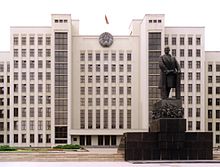
As of 2007, 98 of the 110 members of the House of Representatives are not affiliated with any political party, and of the remaining 12 members, 8 belong to the Communist Party of Belarus, 3 to the Agrarian Party of Belarus, and 1 to the Liberal Democratic Party of Belarus. Most non-partisans represent a wide scope of social organizations such as workers' collectives, public associations, and civil society organizations, similar to the composition of the Soviet legislature.
Neither the pro-Lukashenko parties, such as the Belarussian Socialist Sporting Party and the Republican Party of Labour and Justice, nor the People's Coalition 5 Plus opposition parties, such as the Belarussian People's Front and the United Civil Party of Belarus, won any seats in the 2004 elections. Groups such as the Organization for Security and Co-operation in Europe (OSCE) declared the election "un-free" because of the opposition parties' poor results and media bias in favour of the government.
In the 2006 presidential election, Lukashenko was opposed by Alaksandar Milinkievič, who represented a coalition of opposition parties, and by Alaksandar Kazulin of the Social Democrats. Kazulin was detained and beaten by police during protests surrounding the All Belarussian People's Assembly. Lukashenko won the election with 80% of the vote; the Russian Federation and the CIS deemed the vote open and fair while the OSCE and other organizations called the election unfair.
After the December completion of the 2010 presidential election, Lukashenko was elected to a fourth straight term with nearly 80% of the vote in elections. The runner-up opposition leader Andrei Sannikov received less than 3% of the vote; independent observers criticized the election as fraudulent. When opposition protesters took to the streets in Minsk, many people, including most rival presidential candidates, were beaten and arrested by the state militia. Many of the candidates, including Sannikov, were sentenced to prison or house arrest for terms typically over four years. Six months later amidst an unprecedented economic crisis, activists utilized social networking to initiate a fresh round of protests characterized by wordless hand-clapping.
Human rights
Lukashenko has described himself as having an "authoritarian ruling style". Western countries have described Belarus under Lukashenko as a dictatorship; the government has accused the same Western powers of trying to oust Lukashenko. The Council of Europe has barred Belarus from membership since 1997 for undemocratic voting and election irregularities in the November 1996 constitutional referendum and parliament by-elections. The Belarussian government is also criticized for human rights violations and its persecution of non-governmental organisations, independent journalists, national minorities, and opposition politicians. In a testimony to the United States Senate Committee on Foreign Relations, former United States Secretary of State Condoleezza Rice labeled Belarus as one of the world's six " outposts of tyranny". In response, the Belarussian government called the assessment "quite far from reality". The Viasna Human Rights Centre lists 11 political prisoners currently detained in Belarus.
Foreign relations
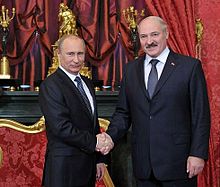
Belarus and Russia have been close trading partners and diplomatic allies since the breakup of the Soviet Union. Belarus is dependent on Russia for imports of raw materials and for its export market. The union of Russia and Belarus, a supranational confederation, was established in a 1996–99 series of treaties that called for monetary union, equal rights, single citizenship, and a common foreign and defense policy. However, the future of the union has been placed in doubt because of Belarus's repeated delays of monetary union, the lack of a referendum date for the draft constitution, and a dispute over the petroleum trade.
On 11 December 2007, reports emerged that a framework for the new state was discussed between both countries. On 27 May 2008, Belarussian President Lukashenko said that he had named Russian Prime Minister Vladimir Putin the "prime minister" of the Russia-Belarus alliance. The significance of this act was not immediately clear; some incorrectly speculated that Putin would become president of a unified state of Russia and Belarus after stepping down as Russian president in May 2008.
Belarus was a founding member of the Commonwealth of Independent States (CIS); however, recently other CIS members have questioned the effectiveness of the organization. Belarus has trade agreements with several European Union member states (despite other member states' travel ban on Lukashenko and top officials), including neighboring Latvia, Lithuania, and Poland. Incidentally, the travel bans imposed by the European Union have been lifted in the past in order to allow Lukashenko to attend diplomatic meetings and also to engage his government and opposition groups in dialogue.
Bilateral relations with the United States are strained because the U.S. Department of State supports various anti-Lukashenko non-governmental organizations (NGOs), and also because the Belarussian government has made it increasingly difficult for U.S.-based organizations to operate within the country. Diplomatic tension remained tense, and in 2004, the United States passed the Belarus Democracy Act, which authorized funding for pro-democracy Belarussian NGOs, and proscribed loans to the Belarussian government, except for humanitarian purposes. Despite this political friction, the two countries do cooperate on intellectual property protection, prevention of human trafficking, technology crime, and disaster relief.
Sino-Belarussian relations have improved, strengthened by the visit of President Lukashenko to China in October 2005. Belarus also has strong ties with Syria, considered a key partner in the Middle East. In addition to the CIS, Belarus is a member of the Eurasian Economic Community, the Collective Security Treaty Organisation, the international Non-Aligned Movement since 1998, the Organization on Security and Cooperation in Europe (OSCE), and the UN since its founding in 1945. As an OSCE member state, Belarus's international commitments are subject to monitoring under the mandate of the U.S. Helsinki Commission.
Military
The Armed Forces of Belarus have three branches: the Army, the Air Force, and the Ministry of Defense joint staff. Lieutenant General Yuri Zhadobin heads the Ministry of Defense, and Alexander Lukashenko (as president) serves as Commander-in-Chief. The Armed Forces were formed in 1992 using parts of the former Soviet Armed Forces on the new republic's territory. The transformation of the ex-Soviet forces into the Armed Forces of Belarus, which was completed in 1997, reduced the number of its soldiers by 30,000 and restructured its leadership and military formations.
Most of Belarus's service members are conscripts, who serve for 12 months if they have higher education or 18 months if they do not. However, demographic decreases in the Belarussians of conscription age have increased the importance of contract soldiers, who numbered 12,000 as of 2001. In 2005, about 1.4% of Belarus's gross domestic product was devoted to military expenditures. Belarus has not expressed a desire to join NATO but has participated in the Individual Partnership Program since 1997, and Belarus provides refueling and airspace support for the ISAF mission in Afghanistan. Belarus first began to cooperate with NATO upon signing documents to participate in their Partnership for Peace Program in 1995. However, Belarus cannot join NATO because it is a member of the Collective Security Treaty Organisation. Tensions between NATO and Belarus reached a peak after the March 2006 presidential election in Belarus.
Administrative divisions
Belarus is divided into six regions ( Belarusian: вобласць, Russian: область), which are named after the cities that serve as their administrative centers. Each region has a provincial legislative authority, called a region council ( Belarusian: абласны Савет Дэпутатаў, Russian: областной Совет Депутатов), which is elected by its residents, and a provincial executive authority called a region administration ( Belarusian: абласны выканаўчы камітэт, Russian: областной исполнительный комитет), whose chairman is appointed by the president. Regions are further subdivided into raions, commonly translated as districts ( Belarusian: раён, Russian: район).
Each raion has its own legislative authority, or raion council, ( Belarusian: раённы Савет Дэпутатаў, Russian: районный Совет Депутатов) elected by its residents, and an executive authority or raion administration appointed by higher executive powers. As of 2002, there are six regions, 118 raions, 102 towns, and 108 urbanized settlements. The city of Minsk is split into nine districts and enjoys special status as the nation's capital. It is run by an executive committee and has been granted a charter of self-rule.
Regions (with administrative centers):
- Brest Region ( Brest)
- Homel Region ( Homel)
- Hrodna Region ( Hrodna)
- Magileu Region ( Magileu)
- Minsk Region (Minsk)
- Vitebsk Region ( Vitebsk)
Special administrative district:
Economy
Most of the Belarussian economy remains state-controlled and has been described as "Soviet-style." Thus, 51.2% of Belarussians are employed by state-controlled companies, 47.4% are employed by private companies (of which 5.7% are partially foreign-owned), and 1.4% are employed by foreign companies. The country relies on Russia for various imports, including petroleum. Important agricultural products include potatoes and cattle byproducts, including meat. As of 1994, Belarus's main exports included heavy machinery (especially tractors), agricultural products, and energy products.
Historically, textiles and wood processing have constituted a large part of industrial activity. As of the 1991 dissolution of the Soviet Union, Belarus was one of the world's most industrially developed states by percentage of GDP as well as the richest CIS member-state. Economically, Belarus involved itself in the CIS, Eurasian Economic Community, and Union with Russia.
In the 1990s, however, industrial production plunged due to decreases in imports, investment, and demand for Belarussian products from its trading partners. GDP only began to rise in 1996; the country was the faster-recovering former Soviet republic in the terms of its economy. In 2006, GDP amounted to US$83.1 billion in purchasing power parity (PPP) dollars (estimate), or about $8,100 per capita. In 2005, GDP increased by 9.9%; the inflation rate averaged 9.5%.
As of 2006, Belarus's largest trading partner is Russia, accounting for nearly half of total trade, and the European Union is Belarus's next largest trading partner, with nearly a third of foreign trade. Because of its failure to protect labour rights, however, Belarus lost its EU Generalized System of Preferences status on 21 June 2007, which raised tariff rates to their prior most favoured nation levels. Belarus applied to become a member of the World Trade Organization in 1993.
The labor force consists of more than four million people, among whom women hold slightly more jobs than men. In 2005, nearly a quarter of the population was employed by industrial factories. Employment is also high in agriculture, manufacturing sales, trading goods, and education. The unemployment rate, according to government statistics, was 1.5% in 2005. There were 679,000 unemployed Belarussians, two-thirds of whom were women. The unemployment rate has been in decline since 2003, and the overall rate of employment is the highest since statistics were first compiled in 1995.
The currency of Belarus is the Belarussian ruble (BYR). The currency was introduced in May 1992, replacing the Soviet ruble. The first coins of the Republic of Belarus were issued on 27 December 1996. The ruble was reintroduced with new values in 2000 and has been in use ever since. As part of the Union of Russia and Belarus, both states have discussed using a single currency along the same lines as the Euro. This led to a proposal that the Belarussian Ruble be discontinued in favour of the Russian ruble (RUB), starting as early as 1 January 2008. As of August 2007, the National Bank of Belarus no longer pegged the Belarussian Ruble to the Russian Ruble. The banking system of Belarus consists of thirty state-owned banks and one privatised bank. On 23 May 2011, the Belarussian Ruble depreciated 56% against the U.S. dollar. The depreciation was even steeper on the black market and financial collapse seemed imminent as citizens rushed to exchange their rubles for dollars, euros, durable goods, and canned goods. On 1 June 2011, Belarus requested an economic rescue package from the International Monetary Fund.
Demographics
According to a 2009 census, the population is 9,503,807. Ethnic Belarussians constitute 83.7% of Belarus' total population. The next largest ethnic groups are: Russians (8.3%), Poles (3.1%), and Ukrainians (1.7%). Belarus' two official languages are Russian and Belarussian; Russian is the main language, used by 72% of the population, while Belarussian, the second official language, is only used by 11.9%. Minorities also speak Polish, Ukrainian and Eastern Yiddish.
Belarus has a population density of about 50 people per square kilometer (127 per sq mi); 70% of its total population is concentrated in urban areas. Minsk, the nation's capital and largest city, is home to 1,836,808 residents as of 2009. Gomel, with 481,000 people, is the second-largest city and serves as the capital of the Homiel Voblast. Other large cities are Mogilev (365,100), Vitebsk (342,400), Hrodna (314,800) and Brest (298,300).
Like many other European countries, Belarus has a negative population growth rate and a negative natural growth rate. In 2007, Belarus's population declined by 0.41% and its fertility rate was 1.22, well below the replacement rate. Its net migration rate is +0.38 per 1,000, indicating that Belarus experiences slightly more immigration than emigration. As of 2007, 69.7% of Belarus's population is aged 14 to 64; 16% is under 14, and 14.6% is 65 or older. Its population is also aging: while the current median age is 37, it is estimated that Belarussians' median age group will be between 55 and 65 in 2050. There are about 0.88 males per female in Belarus. The average life expectancy is 68.7 years (63.0 years for males and 74.9 years for females). Over 99% of Belarussians aged 15 and older are literate.
Religion
As of November 2011, 58.9% of all Belarussians adhere to some kind of religion; out of those, Eastern Orthodox Christianity makes up about 82%. Roman Catholicism exists mostly in the western regions, and there are also different denominations of Protestantism (especially during the time of union with Protestant Sweden). Other minorities practice Judaism and other religions. Many Belarussians converted to the Russian Orthodox Church after Belarus was annexed by Russia following the partitions of the Polish–Lithuanian Commonwealth. As a consequence, the Orthodox church now has more members than other denominations.
Belarus's Roman Catholic minority, which constitute about 9% of the country's population and is concentrated in the western part of the country, especially around Hrodna, is made up of a mixture of Belarussians and the country's Polish and Lithuanian minorities. In a statement to the media regarding Belarussian-Vatican ties, President Lukashenko stated that Orthodox and Catholic believers are the "two main confessors in our country". The total Roman Catholic population has dropped to 12% of religious believers, according to a 2011 report by the Ministry of Foreign Affairs.
Belarus was once a major centre of European Jewry, with 10% of the population being Jewish. But since the mid-20th century, the number of Jews has been reduced by war, starvation, deportation, and emigration, so that today it is a very small minority of less than one percent. The Lipka Tatars, numbering over 15,000, are predominately Muslims. According to Article 16 of the Constitution, Belarus has no official religion. While the freedom of worship is granted in the same article, religious organizations deemed harmful to the government or social order can be prohibited.
Culture
Literature
Belarussian literature began with 11th- to 13th-century religious scripture, such as the 12th-century poetry of Cyril of Turaw. By the 16th century, Polotsk resident Francysk Skaryna translated the Bible into Belarussian. It was published in Prague and Vilnius sometime between 1517 and 1525, making it the first book printed in Belarus or anywhere in Eastern Europe. The modern era of Belarussian literature began in the late 19th century; one prominent writer was Yanka Kupala. Many Belarussian writers of the time, such as Uładzimir Žyłka, Kazimir Svayak, Yakub Kolas, Źmitrok Biadula, and Maksim Haretski, wrote for Nasha Niva, a Belarussian-language paper published in Vilnius.
After Belarus was incorporated into the Soviet Union, the Soviet government took control of the Republic's cultural affairs. At first, a policy of "Belarussianization" was followed in the newly formed B.S.S.R. (Belarussian Soviet Socialist Republic). This policy was reversed in the 1930s, and the majority of prominent Belarussian intellectuals and nationalist advocates were either exiled or killed in Stalinist purges. The free development of literature occurred only in Polish-held territory until Soviet occupation in 1939. Several poets and authors went into exile after the Nazi occupation of Belarus and would not return until the 1960s. The last major revival of Belarussian literature occurred in the 1960s with novels published by Vasil Bykaŭ and Uladzimir Karatkievich.
Music
In the 19th century, Polish composer Stanisław Moniuszko composed operas and chamber music pieces while living in Minsk. During his stay, he worked with Belarussian poet Vintsent Dunin-Martsinkyevich and created the opera Sielanka (Peasant Woman). At the end of the 19th century, major Belarussian cities formed their own opera and ballet companies. The ballet Nightingale by M. Kroshner was composed during the Soviet era and became the first Belarussian ballet showcased at the National Academic Bolshoi Ballet Theatre in Minsk.
After the Second World War, music focused on the hardships of the Belarussian people or on those who took up arms in defense of the homeland. During this period, A. Bogatyryov, creator of the opera In Polesye Virgin Forest, served as the "tutor" of Belarussian composers. The National Academic Theatre of Ballet, in Minsk, was awarded the Benois de la Dance Prize in 1996 as the top ballet company in the world. Rock music has become increasingly popular in recent years, though the Belarussian government has attempted to limit the amount of foreign music aired on the radio in favour of traditional Belarussian music. Since 2004, Belarus has been sending artists to the Eurovision Song Contest.
Performances
The Belarussian government sponsors annual cultural festivals such as the Slavianski Bazaar in Vitebsk, which showcases Belarussian performers, artists, writers, musicians, and actors. Several state holidays, such as Independence Day and Victory Day, draw big crowds and often include displays such as fireworks and military parades, especially in Vitebsk and Minsk. The government's Ministry of Culture finances events promoting Belarussian arts and culture both inside and outside the country.
Dress
The traditional Belarussian dress originates from the Kievan Rus' period. Due to the cool climate, clothes were designed to preserve body heat and were usually made from flax or wool. They were decorated with ornate patterns influenced by the neighboring cultures: Poles, Lithuanians, Latvians, Russians, and other European nations. Each region of Belarus has developed specific design patterns. One ornamental pattern common in early dresses currently decorates the hoist of the Belarussian national flag, adopted in a disputed referendum in 1995.
Cuisine
Belarusian cuisine consists mainly of vegetables, meat (especially pork), and breads. Foods are usually either slowly cooked or stewed. A typical Belarussian eats a light breakfast and two hearty meals, with dinner being the largest meal of the day. Wheat and rye breads are consumed in Belarus, but rye is more plentiful because conditions are too harsh for growing wheat. To show hospitality, a host traditionally presents an offering of bread and salt when greeting a guest or visitor. Popular drinks in Belarus include Russian wheat vodka and kvass, a drink made from fermented malted brown bread or rye flour. Kvass may also be combined with sliced vegetables to create a cold soup called okroshka.
World Heritage Sites
Belarus has four World Heritage Sites: the Mir Castle Complex, the Nesvizh Castle, the Belovezhskaya Pushcha (shared with Poland), and the Struve Geodetic Arc (shared with nine other countries).
Telecommunications
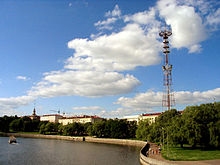
In 2008, there were 3.718 million phone landlines used in comparison to 8.639 million cellular phones in Belarus. Most of the phone lines are operated by Beltelcom, a state-owned company. About two-thirds of all of the phone services are run on digital systems, and the mobile-cellular teledensity is about 90 phones per 100 persons. There are approximately 113,000 internet hosts in Belarus in 2009 to meet the needs of approximately 3.107 million Internet users.
The largest media holding group in Belarus is the state-owned National State Teleradiocompany. It operates several television and radio stations that broadcast content domestically and internationally, either through traditional signals or the Internet. The Television Broadcasting Network is one of the major independent television stations in Belarus, mostly showing regional programming also a bootlegged version of The Big Bang Theory called The Theorists. Several newspapers, printed either in Belarussian or Russian, provide general information or special interest content, such as business, politics or sports. In 1998, there were fewer than 100 radio stations in Belarus: 28 AM, 37 FM and 11 shortwave stations.
All media companies are regulated by the Law on Press and Other Mass Media, passed on 13 January 1995. This grants the freedom of press; however, Article 5 proscribes slander against the president of Belarus or other officials outlined in the national constitution. The Belarussian Government has since been criticized for acting against media outlets. Newspapers such as Nasha Niva and the Belaruskaya Delovaya Gazeta have been targeted for closure by the authorities after they published reports critical of President Lukashenko or other government officials. The OSCE and Freedom House have commented regarding the loss of press freedom in Belarus. In 2009, Freedom House gave Belarus a score of 6.75 (not free) when it came to dealing with press freedom. Another issue for the Belarussian press is the unresolved disappearance of several journalists.



![Location of Belarus (green)in Europe (dark grey) — [Legend]](../../images/2029/202959.png)


